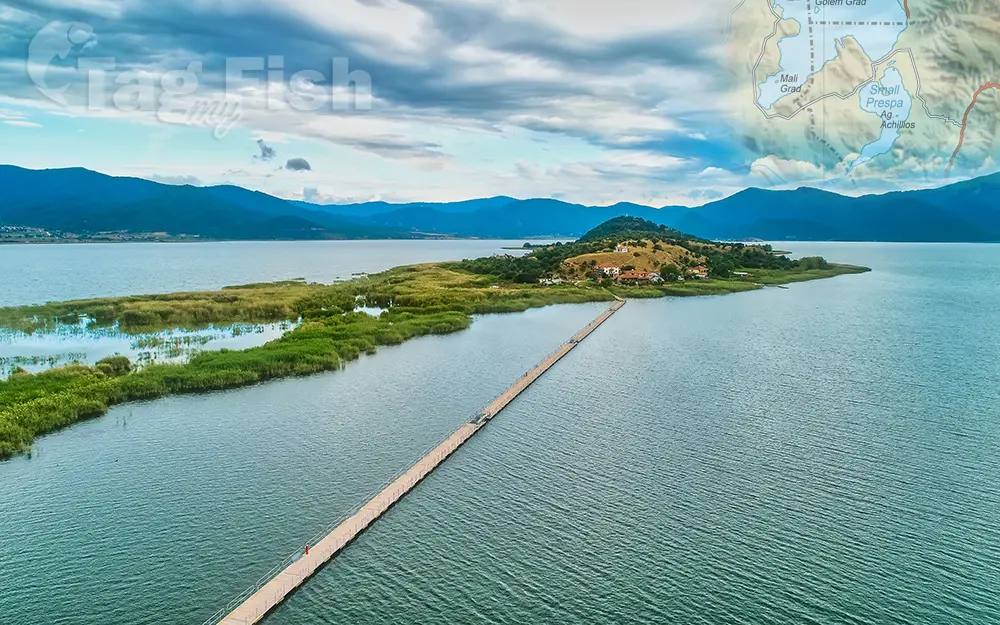Small Prespa Lake

General data
- Name: Small Prespa Lake
- Water system: Drin
- Water type: Natural lake
- Progression: Lake Prespa -> Black Drim -> Drin -> Bojana -> Adriatic Sea -> Mediterranean Sea -> Atlantic Ocean -> Planet Earth
- Climates: Mountain
- Continents: Europe
- Countries: Albania, Greece
Small Prespa Lake is a lake shared between Greece (138 km² drainage area; 42.5 km² surface area) and Albania (51 km² drainage area; 4.3 km² surface area). It is the smaller of the two Prespa Lakes. Small Prespa Lake in particular has been recognized as an important wetland ecosystems favoring breeding and feeding of rare water bird species. It is best known for hosting the largest breeding colony of the Dalmatian pelican in the world. The flora in the region is composed of more than 1,500 plant species of which 146 endemic species in the Lake Ohrid and 39 endemic species from the Prespa Lakes. The villages of Rakickë, Shyec, Buzliqen and Tren surround the Albanian portion of the lake. In Greece the villages surrounding the lake are Agios Germanos, Laimos, Milionas, Platy, Kallithea, Lefkonas, Prespes, Karyes, Mikrolimni, Oxia, Pyli and Vrontero. During 1970 significant amounts of water from the Devoll river was diverted into the lake with the intention to use it latter during the summer time for the irrigation purposes. Due to the high suspended solids in the river water significant siltation did occur on the Albanian side. The practice has recently stopped. The Albanian part of this lake has a surface of 420 hectares. In 1999 the Society for the Protection of Prespa received the Ramsar Wetland Conservation Award for its conservation efforts regarding the Lake Prespa Ramsar site.


